|
CV52Sensibly equivalent¶ to:E1231See also:
|
|
|
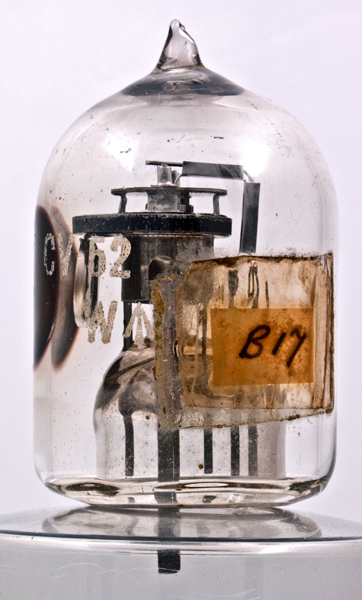
|
The CV52 is a very unusual valve. The envelope folds over the pins like a hood, and the five in-line pins have a larger probe like pin offset to give correct orientation.The valve has an anode dissipation of 10 Watts and was designed to operate at 50 cm or about 600 MHz. It is for use at this high frequency that the attempt has been made to minimise the distance from the electrodes to the external circuit. It was designed to operate in a concentric line.The construction looks to be planar but is not. Thrower 1043 gives details.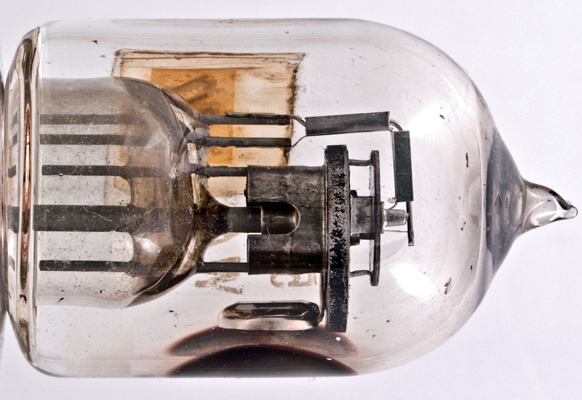
The thick pin (2.5 mm diameter) connects to the grid which takes the form of a squirrel cage, and is formed from some 60 wires of 0.05 mm thickness on a circle pitch of 4.95 mm. Nickel bands 2.2 mm apart hold the cage together. The cathode is made from nickel and is 2 mm long. The outer cylindrical surface is oxide coated, one side of the heater is connected to the cathode internally. The grid-cathode separation is 0.09 mm. The anode is 18 mm in diameter and made of Monel metal, a corrosion resistant alloy based on nickel and copper.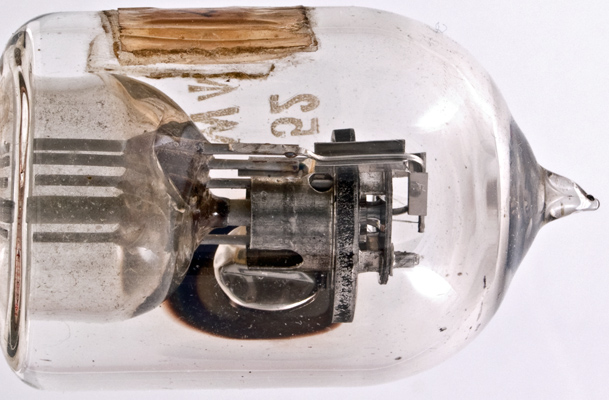
The heater has a coated wire connected to to a spring wire. The other connection is a stout support.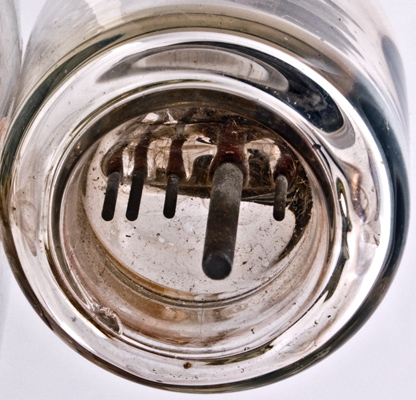
The base pins are 1 mm in diameter with the exception of the grid pin. Left to right: h, h,k, a, g1, a.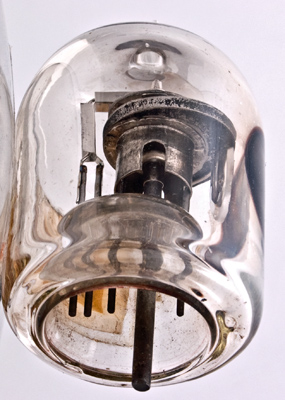
The re-enterant glass envelope.The wide glass envelope is 35 mm in diameter, and excluding the base pins is 55 mm tall.References: Data-sheet, & 1043. Type CV52 was first introduced in 1942. See also 1942 adverts. |
Absolute Maximum Operating Conditions¶
| Vh | Ah | Va | Vg | mAa | gm | μ | 
| 6.3 | 0.75 | 200 | -1 | 60 | 8.0 | 12 |
|
Updated November 12, 2020.
|
|